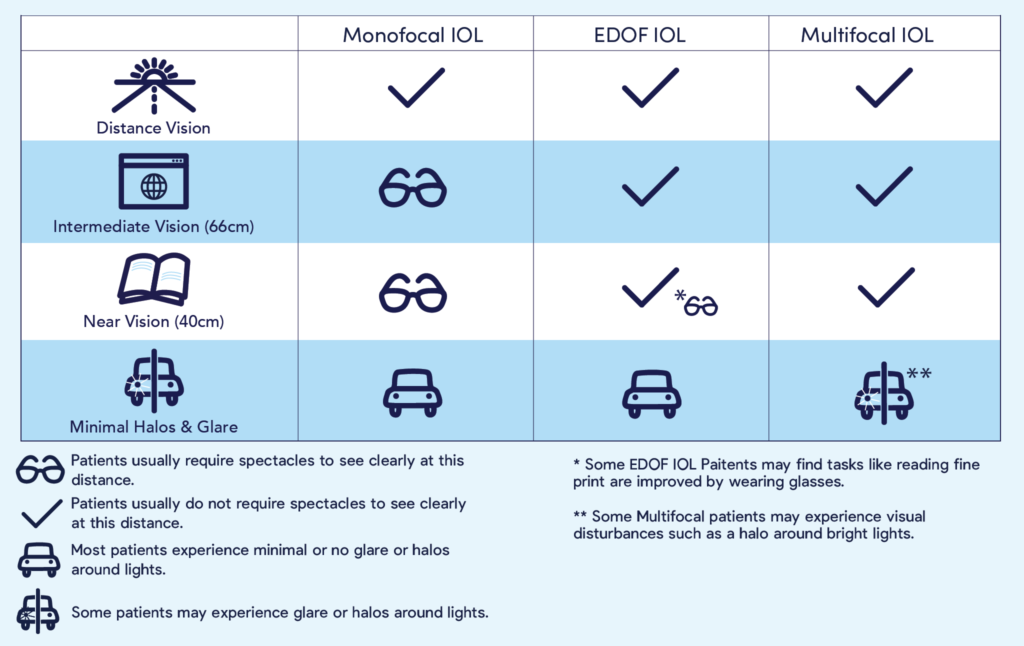What is cataract?
A cataract is a clouding of the lens behind the pupil. It is usually related to age, but can also be caused by trauma, steroids, diabetes, and inflammation. Cataract usually develops over months to years.
What are the symptoms of cataracts?
Cataracts can affect vision but are not painful. Symptoms related to cataract include blurry, cloudy or dim vision, difficulty seeing in low-light situations (eg. night time), sensitive to bright lights and glare, seeing halos, needing stronger glasses and more frequently.
If cataracts are left untreated, people may eventually lose driving licence or go blind.
How are cataracts treated?
Cataracts can be treated by replacing the cloudy lens with an artificial one, known as an Intraocular lens (IOL). Cataract surgery is the most frequently performed surgical procedure and it is usually a short procedure (ie. less than 20 minutes). It is usually performed under a local anaesthetic with sedation in a Day Surgery facility. Cataract is broken up into small pieces by ultrasound through a small incision, and IOL is then inserted in the eye. Stiches are generally not required, and vision can usually recover within days. Some minor discomfort of the eye can be experienced for a few weeks.
Types of intraocular lens (IOL)
There are several IOL options available depending on your need of near and far vision or your need for certain activities following surgery.
Monofocal IOL allows clear vision at a single distance. Usually, distance vision is corrected, and glasses will be required for reading.
Multifocal IOL allows clear focus at more than one distance but have a higher risk of visual side effects such as halos and glare. Glasses are often not required for standard daily activities but might be required for fine details or in a few years after surgery.
Extended-depth-of-focus (EDOF) IOL offers good distance and intermediate (an arm’s length away) vision. Glasses may still be required for some near tasks.
Toric IOL can be incorporated to the above IOLs to correct astigmatism.
Please discuss with your Ophthalmologist to select the IOL that best fits your needs.

When will I need cataract surgery?
Cataract can be treated at any stage, but risks are higher when it matures and becomes too dense. It could be time to consider surgery when your sight deteriorates to a point where it interferes with your daily tasks and cannot be sufficiently corrected by glasses. Alternatively, if glare from bright lights significantly limits your daily activities, it could also be time to consider cataract surgery.
What is the success rate and what are the risks of having surgery?
Cataract surgery is considered of one of the safest procedures with a very high surgical success rate (99%). Serious complications are very rare but may include infection, bleeding, retinal detachment and loss of vision (less than 1 in 1000). Some minor and temporary side effects are common, and these include dry eyes, grittiness, watery eyes, drooping eyelid, inflammation, corneal swelling, and retinal swelling.

